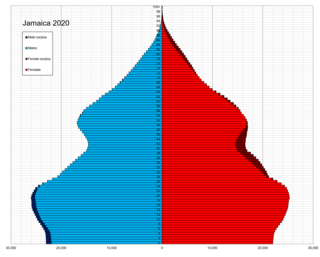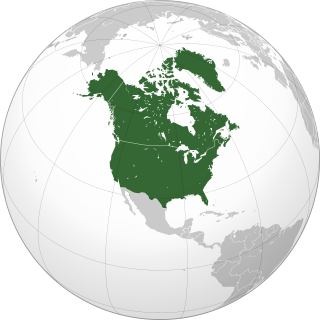
Demographic features of the population of Botswana include population density, ethnicity, education level, health of the populace, economic status, religious affiliations and other aspects.
This is a demography of the population of the British Virgin Islands including population density, ethnicity, education level, health of the populace, economic status, religious affiliations and various other aspects.

Demographic features of the population of Burundi include population density, ethnicity, education level, health of the populace, economic status, religious affiliations and other aspects.

Demographic features of the population of the Central African Republic include population density, ethnicity, education level, health of the populace, economic status, religious affiliations and other aspects of the population.

The Demographics of Gabon is the makeup of the population of Gabon. As of 2020, Gabon has a population of 2,225,287. Gabon's population is relatively young with 35.5% of its population under 15 years of age and only 4.3% of its population over 65 years old. Gabon has a nearly even split between males and females with 0.99 males for every female in the population. In the age range of 15–65, the ration is exactly 1 male to 1 female. The life expectancy of Gabon is lower than the world average. Gabon's population's life expectancy at birth is 53.11 years while the world average is 67.2 years as of 2010. Ethnically, the biggest group in Gabon are the Fang people with over 500,000 people, or about a third of Gabon's population, belonging to this ethnic group. The biggest religion in Gabon is Christianity, with between 55–75% of the population of Gabon being Christian.

Haiti is the eighty-fifth most populous country in the world, with an estimated population of 11,123,178 as of July 2018. However the last census done in Haiti was in 2003, and the population recorded was 8,812,245. According to population DNA tests, approximately 80% of the population of Haiti is Afro-Haitian. Within Black Haitian DNA the composition is approximately 95% African, 5% European or mixed European. This is evidenced in DNA ancestry read outs where the average Haitian consistently tests at nearly 100 percent SSA DNA. The remaining population of Haiti is primarily composed of Mulattoes, Europeans, Asians, and Arabs. Hispanic residents in Haiti are mostly Cuban and Dominican. About two-thirds of Haitian people live in rural areas.

Jamaica is an island country in the Caribbean. The country had a population of 2,825,352 in 2023, the fourth largest in the region.

Demographic features of the population of Mauritania include population density, ethnicity, education level, health of the populace, economic status, religious affiliations and other aspects.

Demographic features of the population of the Republic of the Congo include population density, ethnicity, education level, health of the populace, economic status, religious affiliations and other aspects of the population.

Demographic features of the population of Rwanda include population density, ethnicity, education higher level, health of the populace, economic status, religious affiliations and other aspects.

The demographics of Togo include ethnicity, population density, age, education level, health, economic status and religious affiliations.

Demographic features of the population of Uganda include population density, ethnicity, education level, health of the populace, economic status, religious affiliations and others.

Northern America is the northernmost subregion of North America. The boundaries may be drawn slightly differently. In one definition, it lies directly north of Middle America. Northern America's land frontier with the rest of North America then coincides with the Mexico–United States border. Geopolitically, according to the United Nations' scheme of geographical regions and subregions, Northern America consists of Bermuda, Canada, Greenland, Saint Pierre and Miquelon and the United States.











